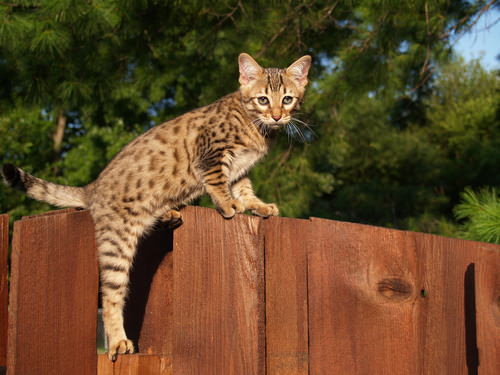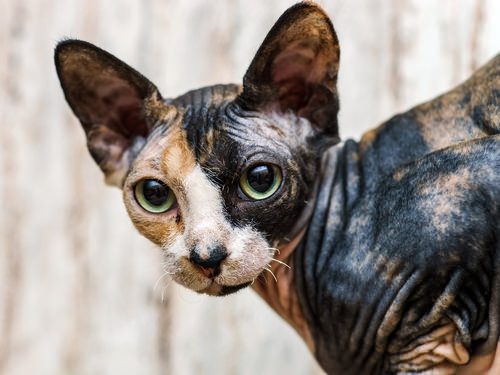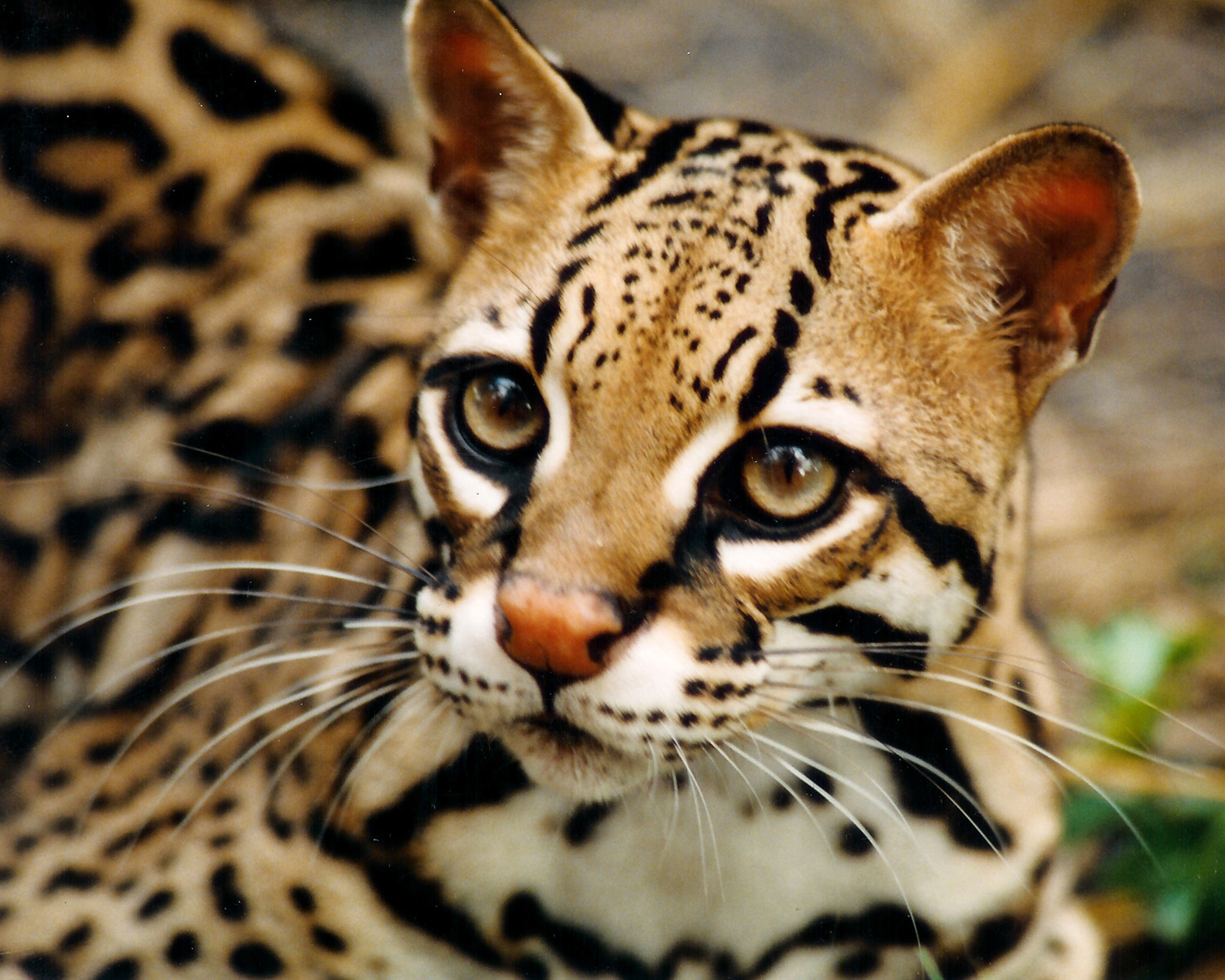|

AFRICAN SERVAL CAT
Exotic cats are extremely beautiful, alluring creatures. The term
exotic cat generally refers to wild cat species that are kept as pets
or in domestic confinement. This category includes all types of wild
species, from smallish bobcats to very large tigers, as well as all
endangered wild cat species. Most people experience wild cats only in
zoos or in photographs. These cats are so attractive and enchanting,
that there's a natural desire to want to pet one and hear its purr.
There is
wonderment too! Is this cat really different than our domestic
companions? The answer is yes, and no. Living with an exotic cat can be
an amazing experience, as these creatures can have the same loving and
affectionate demeanor as a domestic house cat. Yet the reality of
keeping an exotic cat is not at all the same as keeping a house cat.
The very real challenges are much greater than keeping the average pet
cat. Exotic cats are not for everyone, they require a very responsible
and dedicated keeper.
|
CARACAL CAT
Caracals are
nocturnal hunters. They are normally solitary animals, but some live in
pairs. Social interactions usually occur only during mating. Caracals
can purr, hiss, snarl, bark and growl. The caracal breeds throughout
the year. Females have from one to six kittens per litter. The kittens
become independent after about nine or ten months. The young then
travel considerable distances to find and claim their own new
territory. Females normally have one litter per year. In captivity, a
caracal can live up to 16 years; in the wild, they live for 10 to 12
years.
Females stay in one
place to defend the territory, while males roam over larger areas. Both
genders leave scent marks. The caracal's speed and agility makes them
very good hunters; they are able to take down prey two to three times
their size. Their powerful hind legs allow them to leap more than three
metres (9.8 ft) into the air to catch birds on the wing. Caracals are
primarily nocturnal, and occasionally arboreal although they usually
stay on the ground.
|

SAVANNAH CAT
That is a
relatively new breed and it was recognized only in 2001 by the
International Cat Association (TICA). Savannah Cat is a mixed breed of
a serval and a domestic cat. A serval is a slender African wild cat
with large ears, long legs, and a black-spotted orange-brown coat.
That`s why Savannahs weight up to 30 pounds. Despite the fact that
there is some wild spirit in them, this cat is more social and more
loyal, like dogs usually do, than average domestic cats.
|

SPHYNX
The Sphynx is
definitely an unusual breed, but without doubt, it has its admirers.
The main thing about them is that they are furless. They have deep
heavenly blue eyes, they are sweet and playful, Sphynxes also like
being beside his owner, loneliness is torturous for them, they are also
very active, so be ready to see them prancing about the house. Of
course, characters may differ depending on a cat, but in general
Sphynxes possess sweet temper they will be making you laugh all the
time.
Because of
being furless, the cats get hot and cold easily, so at night they look
for a warm and comfortable place to sleep in. Moreover, they can`t be
outside, heating sun leaves sunburns on their skin and severe frost is
fatal for them. Another special feature about these cats is that you
should bathe them every week, as they are “naked”. There`s a common
myth that it was the Sphynx that was worshiped by Egyptians but it is
not true. The breed appeared in `70s so, it stands to reason, that
Egyptians could not have it. In any case, world history has many things
to say about hairless cats through the ages.
|

OCELOT CAT
The ocelot
ranges from 68 to 100 centimetres (27 to 39 in) in length, plus 26 to
45 centimeters (10 to 18 in) in tail length, and typically weighs 8 to
18 kilograms (18 to 40 lb), although much larger individuals have
occasionally been recorded, making it the largest of the Leopardus
genus. It has sleek, smooth fur, rounded ears and relatively large
front paws. While similar in appearance to the oncilla and margay,
which inhabit the same region, the ocelot is larger.
The coat pattern of ocelots can vary, being anything from cream to
reddish-brown in color, or sometimes grayish, and marked with black
rosettes. In many individuals, some of the spots, especially on the
back, blend together to form irregular curved stripes or bands. The fur
is short, and paler than the rest of the coat beneath. There are also
single white spots, called ocelli, on the backs of the ears. Two black
stripes line both sides of the face, and the long tail is banded by
black.
|
|
 ALL RIGHT RESERVED ALL RIGHT RESERVED
|
|

 ALL RIGHT RESERVED
ALL RIGHT RESERVED